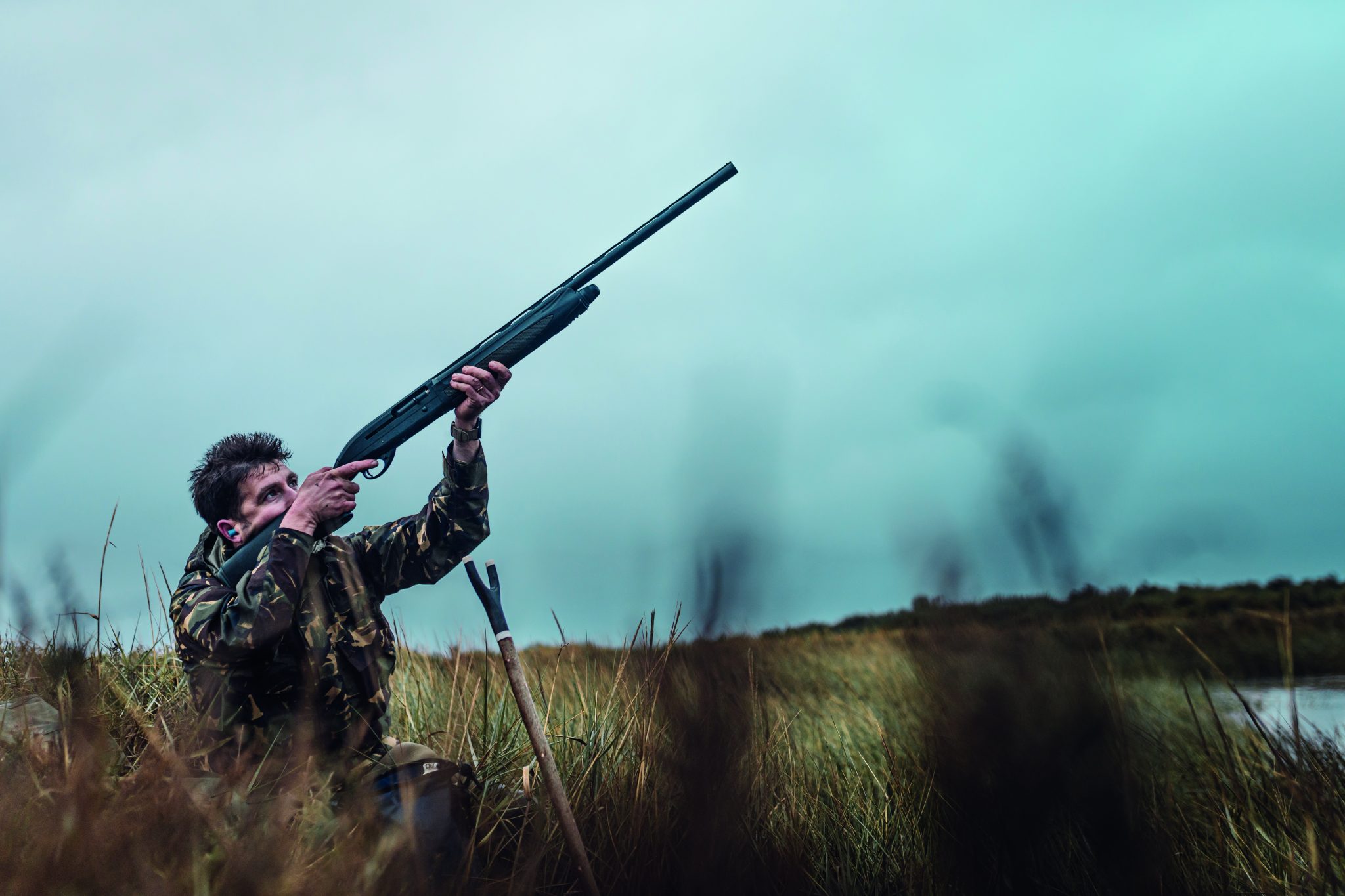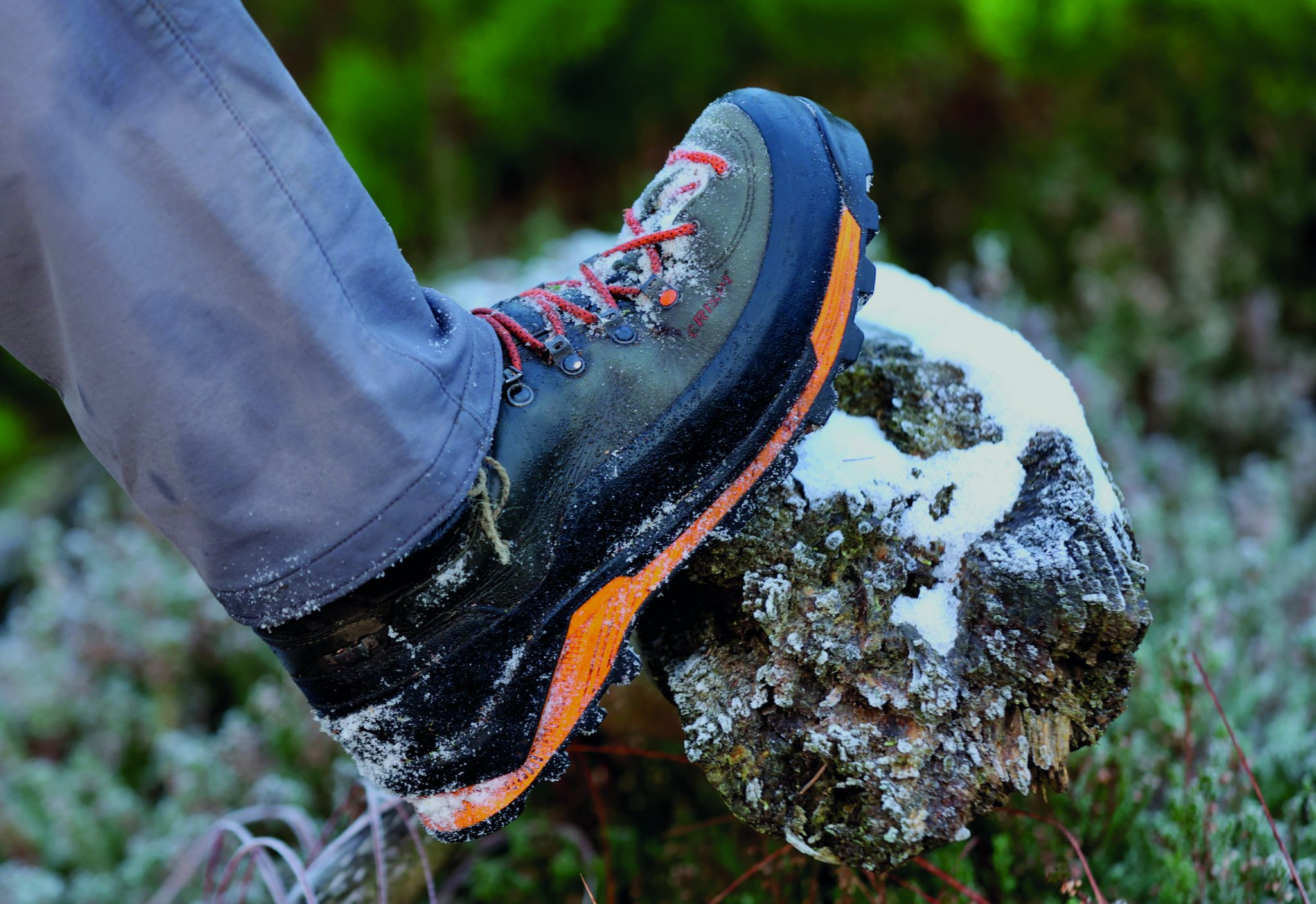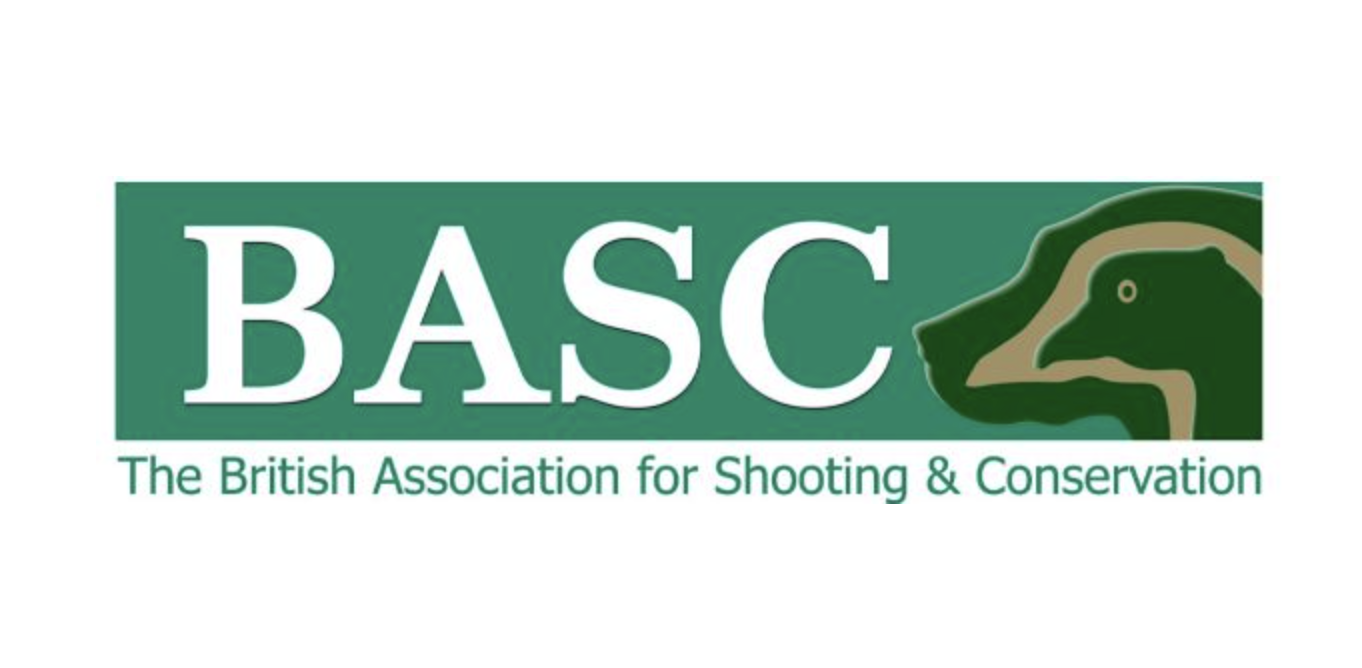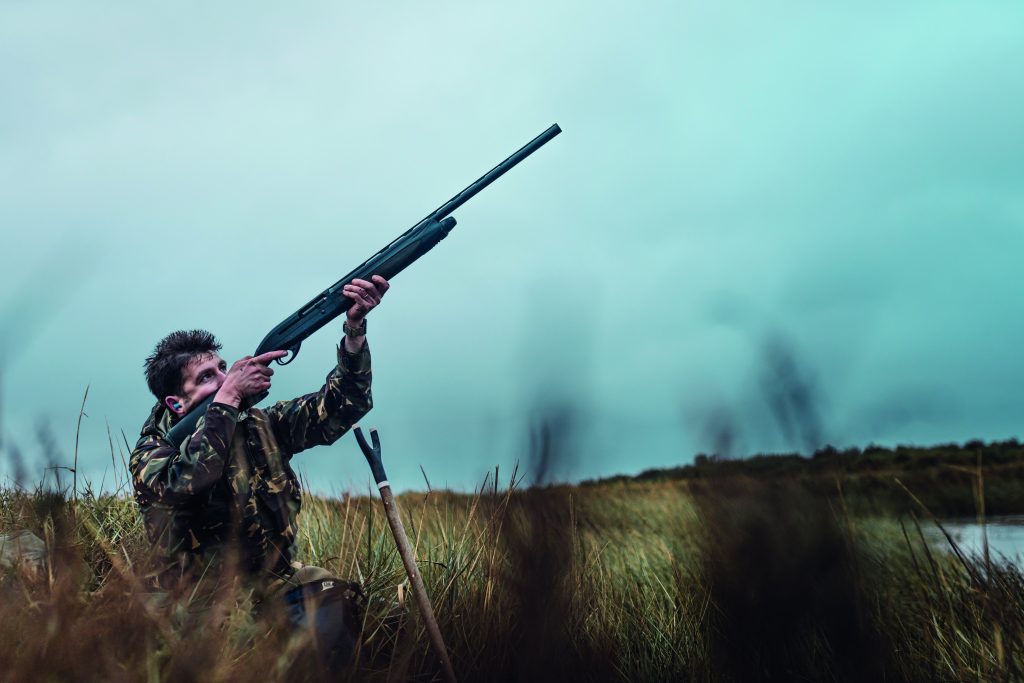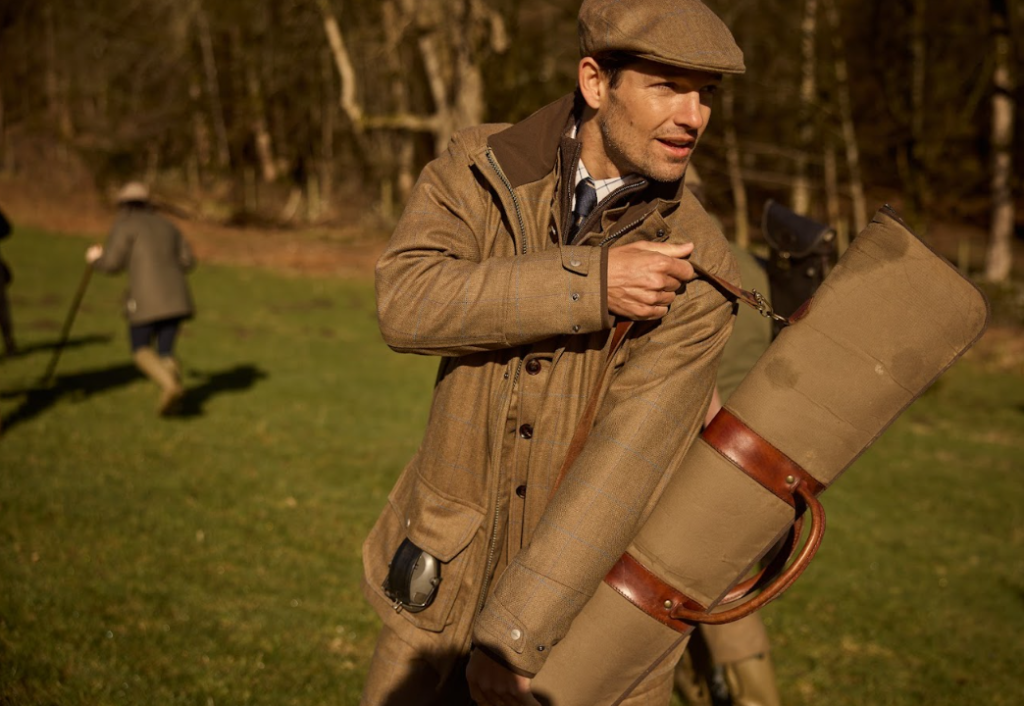Win CENS ProFlex DX5 earplugs worth £1,149 – enter here
Pest control – hooded crows
<strong>Hooded crows are a threat to spring lambs and a difficult pest to control, but Bruce Potts thinks they offer some of the most challenging shooting there is</strong>
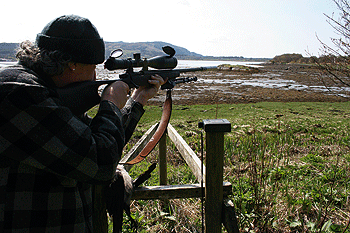
Without doubt the hooded crow has few if any admirers in Scotland. Its status as marauder of the sheep fields is all too deserved, especially around April and May when lambing season is upon us. So for me, a trip to Scotland in mid-April combines the chances of an early season roe deer with the opportunity to put any spare time to good use helping to thin out the hooded crow population.
Widespread throughout west and north Scotland and Ireland the boundary between carrion crow and hoodie territory has become more blurred these days, but in Argyll and Sutherland, where I shoot, the hooded crow is almost exclusive in the area. Their Latin name is Corvus cornix and though once thought to be a subspecies of the carrion crow, Corvus corone, it is now regarded as a species in its own right.
It is in April that you get the best results shooting these birds as it?s then that the crow is busy building its nest high in a treetop prior to hatching a brood of some four to six eggs that will hatch within 20 days. It is the hen bird that incubates the eggs alone while the cock bird, who looks identical but a little larger, is seen roaming and scavenging to feed the hen.
It is this situation that you can exploit to your advantage as nests are usually easy to see or find, and if undisturbed the hoodies follow a regular route to and from their feeding areas and tend to use the same resting or spying ledges.
Stealthy tactics
Knowing the bird?s habits and routines, as with any animal we shoot, is paramount to developing a keen respect as well as an idea of the tactics that will work in an effective and humane control programme.
I may be a bit odd, but I really like crows, especially hoodies. Their bold and strikingly different plumage of black head and wings contrasted with a grey back and underbelly is quintessentially Scottish to me. Crow shooting among the rugged Scottish countryside is my all-time favourite sport, even preferable to deerstalking, as they can be incredibly difficult to get near and shoot, and when all is said and done you have provided a good service to the hill farmer, reducing the risk to his new-born lambs.
The key to intercepting hoodies is understanding that they are scavengers at heart and, as such, can be coaxed into range by bait, decoys and calls. My tactics vary enormously from Argyll to Sutherland where the latter is nearly devoid of trees and the cliffs offer cover, and therefore a shooting opportunity. Argyll on the other hand is greener with areas of forest and shoreline where I shoot. Here interception and stealth are the essential components to a successful crow shoot.
Gun choice
As usual ? readers may be aware of my ineptitude with a shotgun ? I favour a rifle for 95 per cent of my hooded crow shooting. The only exception is where a flightline is too close to The hooded crow with its distinctive markings can be remarkably difficult to shoot and so can make some of the finest sporting quarry in the country habitation and a rifle is unsafe to use. I use anything from a .17 AK Hornet to a .22 rimfire or even an air rifle for closer-range crows, and any .20 or .22 centrefire rifle for longer range shots. However, the 6mm PPC round in a Dave Tooley custom rifle is simply dynamite on crows, and also on roe. It is legal too, so in April and May you have both quarry covered.
The rifle allows several advantages: first, having to stalk a hooded crow with an air rifle or .22 rimfire is hard work and brings the balance back in favour of the crow with its keen eyesight, and so satisfies the ethical wish for a fair chase. But second, you can take up a concealed position and work out your ranges with a laser rangefinder, determine a safe backdrop and then wait for old black cap to arrive.
Argyll adventures
For years ? and this day was no exception ? the last weeks of April have offered good chances of shooting hoodies as the first spring lambs mew gently on the lush verdant new grass fields. These fields border a small inlet of a coastal loch with the hills rising gently behind them, covered with vegetation and old deciduous woods. It?s an idyllic setting especially with the sun now shining and a temperature of 20 degrees, though the ever-present deer ticks are less welcome. Hoodies are always more vocal around lambing time, calling back and forth to the hen on the nest, and also to exert their territorial rights. Nothing is better than the low cawing of a hoody drifting across in a morning mist hanging lightly over the dewy fields.
I set position with the wind in my face, at least 200 yards away if using the PPC rifle, so I am not intruding into the landscape that the hoodies scour constantly for danger; if you are spotted either in cover or stalking across a field then that can be it for the morning. You really have your work cut out to get close, so I sneak into position before first light at 4am and then quietly wait and let the world unfold before me. You learn a lot about how each animal or bird interacts by being invisible. I rarely use camouflage ? the same old woolly hat and wool shirts suffice for me but gloves and a scarf to hide the face are essential. Always keep a lightweight camouflage net to and in the roe sack to put over you if no direct cover is available, but make sure you have pegs, otherwise it will flap like a flag in the wind and announce your presence!
I had loaded a cartridge into the rifle ? a charge that had changed little since I load-tested the rifle 11 years ago. A charge of 26 grains of Vit N133 powder is ignited with a Federal small rifle match primer that pushes a 65-grain Hornady V-Max bullet at 3,087fps, allowing me an accurate arc of fire up to 500 yards. The Nightforce scope has clear vision and the 15x magnification on this model is all you need to pinpoint a hoody on a distant tree or rock, and the NP-R2 ladder-type reticule allows a quick change of zero if old black beak changes position.
I could hear the cawing from a distant tree. It was out of sight and an unsafe shot anyway, so patience was essential, but nothing appeared. I suddenly twigged that I was in completely the wrong place; for years I had stalked or waited over the lambs for crows to appear in the fields or trees but, like clockwork, an increased cawing always occurred around the foreshore at midday and then late evening. I had thought, wrongly, that the crows were getting ready to mob the lambs but, of course, the tide was out and the hoodies were actually on the beach picking over mussels, molluscs and crabs.
Here was an opportunity to exploit the situation and reposition myself quietly behind my father?s boat and landing stage. Sure enough a lone crow was picking his way over the pebbles among the seaweed, so I centred the cross-hairs a fraction above his head. The range was 217 yards according to my Leica rangefinder and the Jewell trigger released a speeding V-Max as soon as he stopped bobbing around. Suffice it to say the shot was accurate and I had a muddy trek to retrieve the quarry. With the quiet report from the MAE 32mm muzzle sound moderator you can sometimes get a second shot at another crow but my cover was blown and that was that. I had learnt a lesson here to change tactics when necessary and not to rely on the same old approach, but would this work at the croft in Sutherland?
Sutherland?s law
Northern Sutherland is a completely different landscape in which to shoot hooded crows: the terrain is almost lunar with trees replaced by sparse rocky headlands and hilltops ? spectacular but with little cover for stalking your prey.
A week later than at Argyll the lambs were born, and on the fields bright sunshine followed but with a stiff westerly wind that always makes shot placement a problem. The local ranger, who is a crofting friend of mine, was keen to thin out the hoodies and so welcomed another rifle. Here, my tactics were to find a tree and hope that a crow?s nest would be evident. It was and, again, at only 87 yards a V-Max found its mark. This time it was a cock bird that had been feeding a hen on the nest, so now the hen would have to travel from the nest and risk her eggs cooling from lack of incubation or, worse, being pilfered by other crows. I returned the next morning, again at daybreak, positioned myself behind a stone wall and waited for the hen to reveal herself. A small ?thut? in the morning air was the only indication that this nest was no longer a threat to the new spring lambs suckling nearby.
Where nests are not evident the cliffs are where to find the marauding hoodies. They will be after gull eggs, carrion and small mammals, such as rabbits, or small birds. Here I usually set up in position with a freshly-shot rabbit staked out as bait, or a moving decoy (no sound) such as the Jack-in- the-Box that can bring a wary but inquisitive crow in to range.
Conclusions
Hoodies can be hard to stalk and that makes them great sport for me, but reducing the corvid population, especially around lambing season, wins you the praise of landowners. I love the close quarter and difficult stalking that an air rifle affords you, I get good results from baiting with rabbits, and the use of decoys can be handy if the crows are wary and never really get within range, or you have shot and missed a bird and they are aware of your presence.
Regardless, a centrefire rifle in a fast, small-calibre bullet weight such as the .20 Tactical, .17 PPC, .22-250 or .220 Swift using fast twist rifling to handle heavier bullet weights for added range is superb. Or the 6mm PPC gives accuracy and wind-bucking abilities to tip the odds in your favour, and gives a good range to where many a crow thinks it?s safe.
As always, I shoot enough to please the landowner but no more, as I have a quiet regard for the old hooded crow. Our morning chorus would not be the same without its instantly recognisable call in the Scottish landscape.
Related Articles
Get the latest news delivered direct to your door
Subscribe to Shooting Times & Country
Discover the ultimate companion for field sports enthusiasts with Shooting Times & Country Magazine, the UK’s leading weekly publication that has been at the forefront of shooting culture since 1882. Subscribers gain access to expert tips, comprehensive gear reviews, seasonal advice and a vibrant community of like-minded shooters.
Save on shop price when you subscribe with weekly issues featuring in-depth articles on gundog training, exclusive member offers and access to the digital back issue library. A Shooting Times & Country subscription is more than a magazine, don’t just read about the countryside; immerse yourself in its most authoritative and engaging publication.



